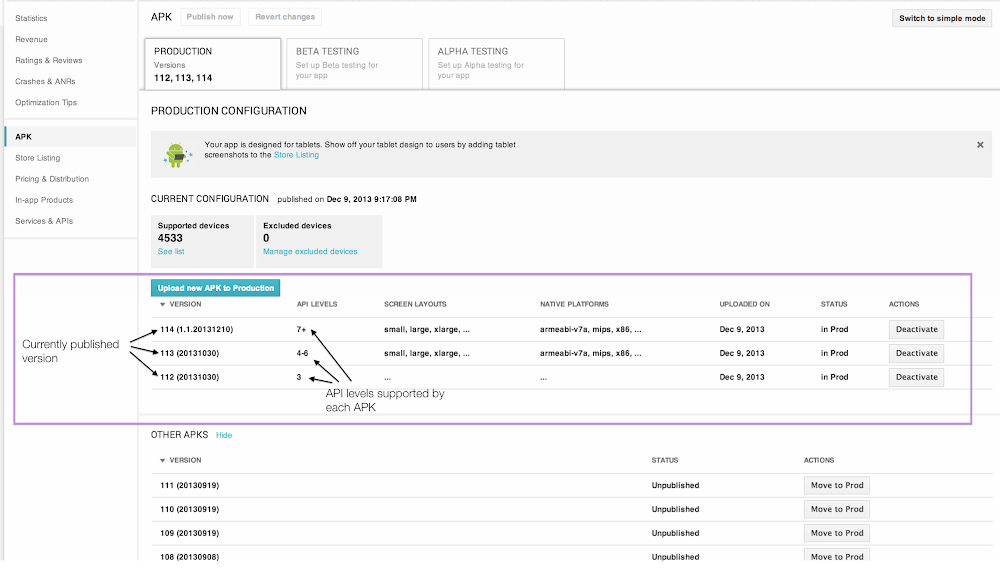Up until recently, AnySoftKeyboard was supporting Android devices all the way back to 1.5 in a single APK. Mostly, it worked fine, and I was able to use FrankenRobot to utilize higher API levels features successfully. But there was a cost.
TL; DR;, you can check out this screen-shot, which explains a lot.
Android 1.5 can not support the Support Library (which includes the Fragment support), and Android 1.6 till 2.0 can not support the App-Compact library (which includes the ActionBar), so providing a single APK for all devices had it cost: no modern UI/UX.
Separating
After reading what Google has to say (read it, it is very good background) about it, I’ve decided to separate the App by API level: API 3, API 4-6, and API 7+. Why this separation:
API 3 - Android v1.5
Devices still running Android 1.5 are very old. They are very limited on internal storage, RAM and CPU power. I’ve decided to create a special build for those phones: minimal resources (just MDPI), just ARM jni, and removed all code that does not support this API level. I was able to reduce the size of the APK from 3.2MB to 2.1MB, which is very helpful for owners of those devices.
This is the AndroidManifest file for this build:
API 4-6 - Android v1.6-v2.0
These devices are usually much better. But due to OS limitations, they can not support modern UI language (like the ActionBar). So, here, I’ve decided to also create a separate build for these API levels. Again, reduced set of resources (MDPI and HDPI), a few more jni libs, and reduced set of functionality (e.g., no voice input).
This is the AndroidManifest file for this build:
API 7+ - Android v2.1
This API level supports all the required support library, and usually, those devices are very strong.
This is the AndroidManifest file for this build:
Things to Note
You’ll notice that for an higher API level, there is an higher versionCode:
- First APK is for
android:minSdkVersion="3", and hasandroid:versionCode="112". - Second APK is for
android:minSdkVersion="4", and hasandroid:versionCode="113". - Third APK is for
android:minSdkVersion="7", and hasandroid:versionCode="114".
This is required in case the user’s device will get an OS upgrade that requires an APK for an higher API level,
e.g., say your HTC G1 is running Android 1.5, and then, one glory morning, you are pushed with an OS upgrade to Android 1.6,
prior to the OS upgrade, you have be given android:versionCode="112", but after the OS upgrade, this version is no longer compatible with your device.
Don’t worry, Play Store to the rescue! It will automatically update your APK to android:versionCode="113". And since it needs to update
your APK, it is required the that new APK will have a higher versionCode. Got it?
Play Store Configuration
After you have your APKs built, each with its own android:minSdkVersion and android:maxSdkVersion, you can upload them to the Play Store.
You should see something like this:

How’s that for A picture is worth 37.5 tweets!!
Good luck.